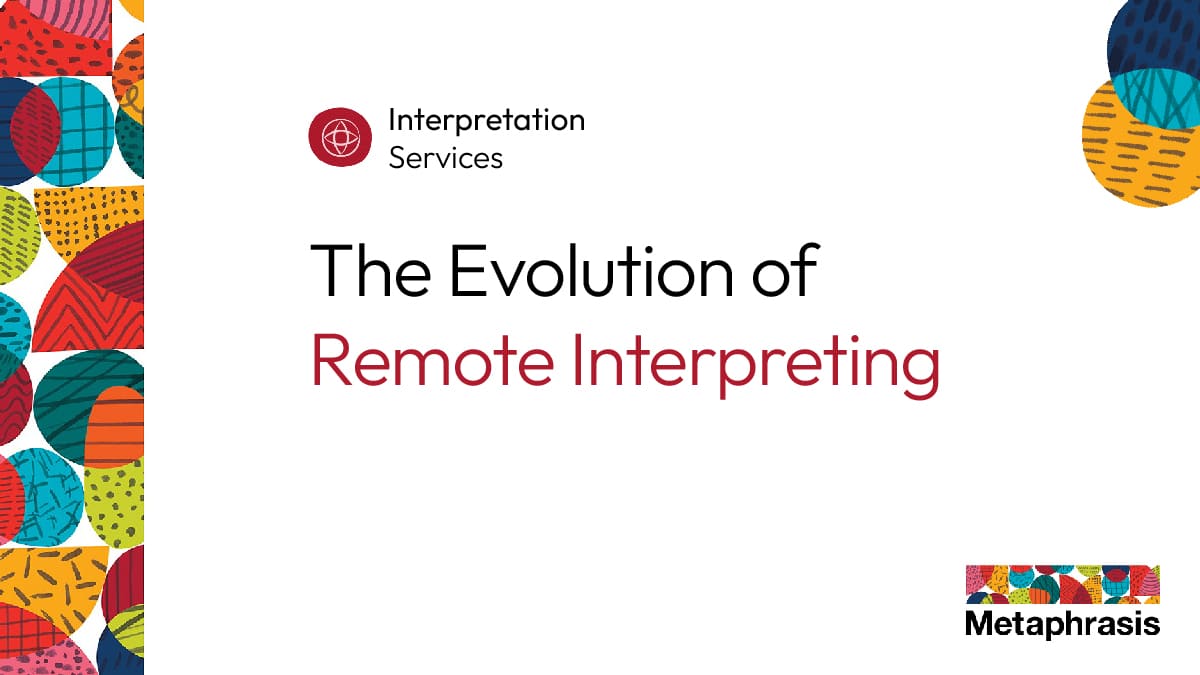
The Evolution of Remote Interpreting: Adapting to Virtual Communication
Remote Interpreting refers to using communication technologies to access an interpreter in another area. This can also refer to the various forms of interpretation paired with technology.
Two major events kickstarted remote interpreting as we know it today. The first was the introduction of wired systems for speech transmission. The patent was first filed with IBM which led to simultaneous remote interpreting. This method was famously utilized during the Nuremberg Trials. The next major event was the emergence of the World Wide Web or Internet. This provided access to a plethora of information from which exploratory research could be conducted.
Benefits of Remote Interpretation
Modern interpretation platforms are enhanced through technology. This growth in remote interpretation has probably occurred for reasons surrounding accessibility and price-efficiency.
Accessibility:
Organizations now enjoy greater access to interpreters scattered all over the world, especially for rare languages for which an on-site interpreter is seldom available. Since there is a huge network of interpreters to choose from, it is far easier to connect with an interpreter remotely than to arrange for an in-person one. Patients or clients can be linked to an interpreter within seconds. Remote interpreting is also a fantastic tool for finding an interpreter last minute, with little to no notice.
Cost-Efficiency:
Remote interpreting is much more cost-efficient than onsite services, and hence often preferred by organizations. Remote interpreting saves costs related to travel and accommodation, which counts let alone for smaller organizations.
Collaboration and Efficiency:
Well-established collaboration among participants leads to the immediate seeing of documents, presentations, and an easy inclusion of multiparty attendees from several locations. While during videoconference interpreting, the remote condition was found to adversely affect the work of the interpreters; however, in stark contrast with the results from remote conference interpreting, this did not result in any loss of motivation.
Drawbacks of Remote Interpreting
There, however, are some drawbacks to remote interpretation. Let’s outline the main reasons why remote interpreting may not be the correct mode of interpreting for certain cases.
Dependency on Technology:
Remote interpretation heavily relies on technology, which can impact the quality of interpretation. Key factors include:
- Poor connectivity: This is particularly problematic in rural areas.
- Reduced non-verbal cues: The lack of visual context can hinder communication.
- Visual limitations: Individuals who are deaf and/or blind may struggle with remote interpreting, necessitating a live interpreter.
- Device constraints: Some consumers may rely on smartphones or smaller displays, which can create communication challenges.
Privacy and Confidentiality:
Given the sensitive nature of the information involved, clients may have concerns about using remote interpretation without assurances that their private data will remain secure. Many consumers may prefer not to disclose information via video and may feel safer discussing sensitive topics in person.

Best Practices for Remote Interpreting
There are some important practices to keep in mind whether you are an interpreter or looking to become one.
Best practices for interpreters in virtual settings are as follows:
Ensure that your technology is up to the Section 1557 standards
- This includes proper lighting, privacy, no interruptions or background noise, connection speed, clear video, high-speed internet access, and a good microphone and speakers. Make sure to troubleshoot to ensure that there are no technological issues before the appointment
Maintain Professionality
- Always use a professional tone
- Maintain neutral facial expressions
- Dress professionally – business casual is a great option, if not business professional.
- Always use a professional background – there are a variety of virtual backgrounds that platforms may offer
Enunciate clearly so that clients have no confusion and so that clients who are hard of hearing can also lip read.
All in all, throughout the next few years, Metaphrasis continue to see a rise in remote interpretation USA due to the continual advancements in technology. Organizations, such as hospitals, will continue to opt for remote interpreters due to cost-efficiency and on-demand availability as well.
